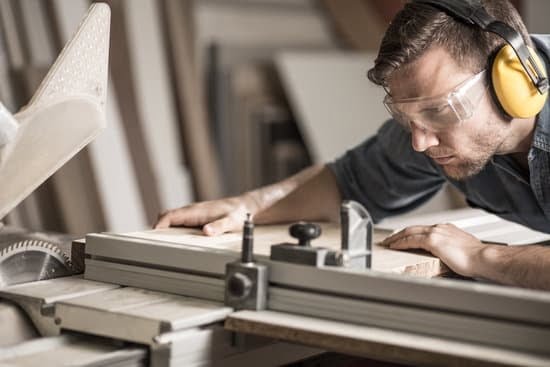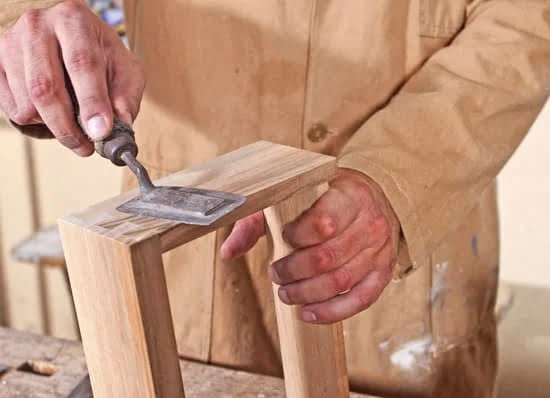Examples of Clamps for Woodwork
Bar Clamps: Bar clamps are the most popular and versatile type of clamp; they consist of a fixed bar with an attached head and sliding jaw that can be manipulated to securely hold two pieces of wood together. These kind of clamps come in a variety of sizes and varieties such as deep throat, light duty, heavy-duty and no-slip grip. They are perfect for use on large projects and when clamping wider boards, where regular clamping faces begin to struggle.
Pipe Clamps: Pipe clamps are available in different lengths and thicknesses, making them ideal for more demanding jobs when more clamping pressure is needed. They also provide improved stability than most other types of clamps; this makes them ideal for those tricky cabinet doors that seem to refuse staying shut! They consist of a pipe (usually steel) with adjustable heads that slide onto the pipe allowing you to apply generous amounts of pressure while you work.
C-Clamp: Another popular type of clamp is the c-clamp which comes in many shapes, sizes and strengths depending on your needs. This type of clamp is great for fixing joints or quickly gluing up frame panels with the added benefit that it can be used in some awkward positions, proving great versatility and flexibility. C-clamps typically feature 3 parts, a threaded bolt for easy adjustments, swiveling feet/pads to help absorb any shock during tightening, and a large T handle which helps improve comfort while applying large pressures during operation.
Spring Clamp: Spring clamps are lightweight tools which focus on bringing small items together quickly; they’re usually made from plastic or metal components featuring spring tensioners with handles located inside the palms to make it easier to open them up ready for your job at hand! As they have limited gripping power they’re best suited for light-duty jobs like holding small projects securely such as frames or even modelling clay sculptures.
Alternatives to Clamps for Woodwork
1. Glue – Adhesive can be used to attach pieces of wood together on a project. This method is best used for creating a tight bond between two surfaces, and some types of glue are especially effective when bonding absorbent materials, such as wood.
2. Screws – Screws are great for attaching two funacial boards together, as they provide stability and ensure that the pieces will not move around or pop apart after time has passed.
3. Nails – Like screws, nails also provide stability; however, unlike screws, they don’t require pre-drilling into a material before insertation. Sometimes using both nails and glue provides extra security from your project falling apart.
4. Dowels – Dowels are small cylindrical wooden or metal rods which make excellent joints if done correctly with the proper tools. By sliding the dowels into two adjoining pieces of wood and gluing them in place you will create an exceptional firm joint which will last for many years to come if cared for properly over time.
5. Cleats – Cleats are angled pieces of wood which fit together flush against each other; this creates more evenly dispersed pressure along the joint seam when working with large objects such as shelving units or doors so that they do not shift out of alignment during use or transportation.
Additional Safety Tips and Precautions when Using Clamps for Woodwork
1. Wear protective eye wear while using clamps to avoid damage that could occur from flying particles or other materials.
2. Make sure there is adequate clearance between the clamp and the user’s body.
3. Make sure to use appropriate size clamps for the job – too large of a clamp may be unwieldy and cause injury, while too small of a clamp may not be able to hold pieces together securely.
4. Don’t use worn or damaged clamps – these could break during use, posing a risk of injury or property damage if they are put under high pressure.
5. Ensure that all components of the clamp (such as handles, plates, screws) are properly tightened and secure before continuing with your project.
6. Set up a safe working space where your tools won’t slip or fall off table surfaces, as contact with flooring can cause damage that can lead to injury in some cases.
7. Keep children and pets away from your work area and any parts of your project that have yet to be secured by clamps – loose materials such as wood pieces, nails and sawdust can easily become airborne and create hazards in busy work areas.
Troubleshooting Tips for Clamps for Woodwork
1. Troubleshoot Problems Early: It’s important to troubleshoot problems as soon as they arise rather than waiting. Check the clamps and all components (screws, nuts, etc.) regularly before and during use to ensure they are in good working order.
2. Use the Right Clamps: Make sure you are using the right kind of clamp for the job. There are different types of clamps available, such as cam and clam clamps, parallel clamps, and strap clamps, among others.
3. Check For Wear & Tear: Damaged or worn parts on the clamp can prevent it from functioning properly and can even lead to slippage or breakage of woodwork pieces. Check all components regularly for wear and tear, as well as tautness once it is clamped down.
4. Clean Regularly: Cleaning the moving parts of a clamp may help if it is stuck or not releasing properly when you want to unclamp your pieces. If a piece is stuck try unscrewing any screws holding the jaw to clear any debris that may be preventing it from opening normally.
5. Lubricate Moving Parts: In addition to cleaning, lubricating any moving parts with a light oil or WD-40 may also help if a clamp is stuck or isn’t unclamping properly.
6. Forceful Unclamping Procedure: If all else fails and you still cannot unclamp your pieces then there is a forceful procedure you can do to loosen them up – simply take a rubber mallet or hammer handle and use this tool along with a block or protective cloth on top of your piece that needs releasing to loosen up the clamp without damaging your woodwork pieces

Hi everyone! I’m a woodworker and blogger, and this is my woodworking blog. In my blog, I share tips and tricks for woodworkers of all skill levels, as well as project ideas that you can try yourself.





